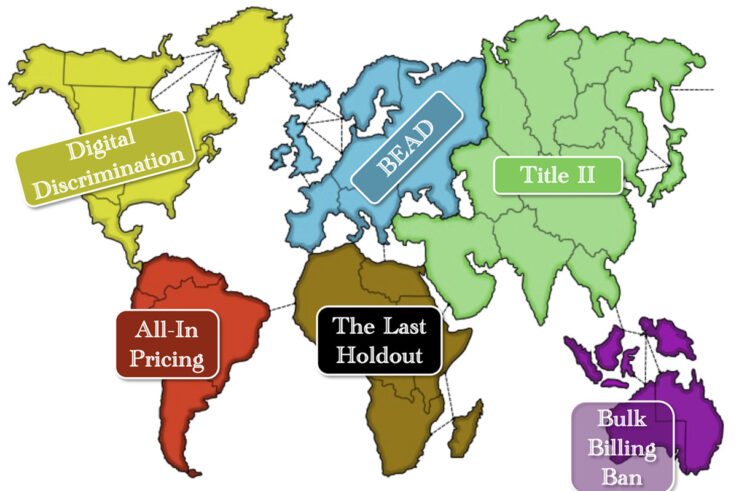This article is a part of the Section 2 Symposium symposium.
The DOJ’s § 2 Report offers two recommendations under the heading of “General Standards for Exclusionary Conduct.” First, for evaluating alleged acts of exclusion, the Report endorses the burden-shifting framework of the D.C. Circuit’s 2001 Microsoft decision. Second, after canvassing various standards of anticompetitive effect, the Report settles on the “disproportionality test,” under which “conduct that potentially has both procompetitive and anticompetitive effects is anticompetitive under section 2 if its likely anticompetitive harms substantially outweigh its likely procompetitive benefits.”
In this post, I’d like to comment on these recommendations by recalling how the D.C. Circuit applied its burden-shifting approach in Microsoft. In doing so, I draw on The Microsoft Case: Antitrust, High Technology, and Consumer Welfare (Chicago 2007), which I wrote with John Lopatka of Penn State.
Under the D.C. Circuit’s burden-shifting approach, the plaintiff is first required to show that the defendant’s conduct harmed not only competitors but the “competitive process and [therefore] consumers.” If the plaintiff does so, the defendant must offer a procompetitive justification for the conduct, that is, “a nonpretextual claim that its conduct is indeed a form of competition on the merits because it involves, for example, greater efficiency or enhanced consumer appeal.” If the defendant produces a justification, the plaintiff is required either to refute it or to prove that the anticompetitive harm outweighs any benefit.The DOJ claimed that this burden-shifting approach would save litigation costs by allowing summary judgment or dismissal on the pleadings. In Microsoft itself, however, the test only structured the appellate court’s analysis of voluminous evidence of competitive effects and efficiency justifications submitted by both sides at the trial. As applied by the court of appeals, the first step in the analysis—determining whether a practice was prima facie anticompetitive—did the heavy lifting. Of the court’s eight reversals of holdings of monopolization, seven were because the conduct was not anticompetitive. Those determinations, of course, ended the analysis in Microsoft’s favor. The court’s determinations that Microsoft’s other practices were anticompetitive were almost as decisive. Only once did Microsoft successfully rebut a showing of anticompetitive effect by offering an efficiency justification. (In that instance, Microsoft was able to justify its design of Windows to override, for limited purposes, a user’s designation of a rival product as the default browser.) The government failed to refute this justification or show it was less weighty than the anticompetitive effect.
Thus, by far the most important issue for the D.C. Circuit was whether a practice harmed the “process of competition” and not simply rivals. The court’s application of this standard in some ways resembles the disproportionality standard endorsed by the DOJ Report. The D.C. Circuit upheld practices that provided obvious benefits to consumers—lower prices or better products—even though the practices harmed rivals and seemed to be unprofitable to Microsoft. For example, the court upheld Microsoft’s practice of giving Internet Explorer away free to Internet Access Providers, because, “the rare case of price predation aside, the antitrust laws do not condemn even a monopolist for offering its product at an attractive price.” Similarly, the court held that Microsoft did not monopolize by creating an incompatible, Windows-specific Java Virtual Machine, because the new product was a bit faster than Sun’s JVM.
Apart from the instances in which Microsoft offered a better product or a lower price, however, the court of appeals held that practices that tended to harm Netscape and Sun were prima facie harmful to competition. For example, the court condemned practices—like Microsoft’s exclusive contracts with software developers—that the court found tended to reduce Netscape’s browser “usage share,” even though the government did not quantify any such effect. The court similarly condemned Microsoft’s efforts to “trick” software developers into writing programs in Microsoft’s Windows-specific version Java rather than in Sun’s cross-platform version, even though there was no proof any developers actually fell for the ploy. In instances like these, the burden shifted to Microsoft to produce a procompetitive justification, which it was unable to do to the court’s satisfaction. Equally important, the court did not require the government to prove that these actions that tended to harm Netscape and Java really did anything to maintain Microsoft’s monopoly. It was enough, at least for purposes of liability, that Netscape’s browser and Sun’s Java technologies posed a “nascent” threat to evolve into a rival platform that might erode the applications barrier to entry that protected Microsoft in the market for operating systems.
Microsoft thus raises some difficult questions about what a disproportionality standard means in a burden-shifting framework. First, it seems that certain types of procompetitive benefits trump any anticompetitive effects, regardless of their proportions. The court held (correctly, I believe) that practices that obviously benefit consumers are legal regardless of the harm they inflict on rivals. That holding seems to preclude liability even in cases where the harm to rivals might exceed the benefit to consumers—for example, where a new product or lower (non-predatory) price drives all competitors from the field and leaves the innovator with a monopoly. In such an instance, one might argue that the gains to dynamic competition exceed any static losses, but any such reading should be made explicit in the standard. Second, Microsoft shows that there is a danger, where obvious consumer benefits are not present, that courts will confuse harm to rivals with harm to competition. The disproportionality standard should be read in such cases to require plaintiffs to offer solid evidence and theory to support claims of anticompetitive effect, particularly where the alleged effect is predicted to occur in the future.




